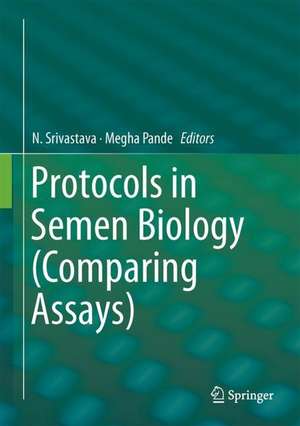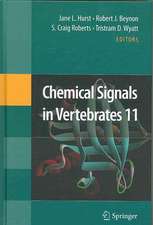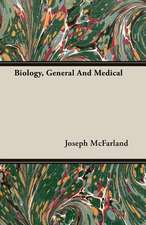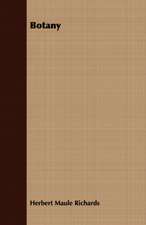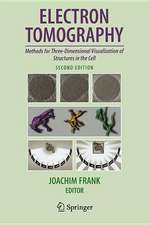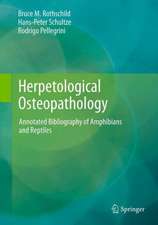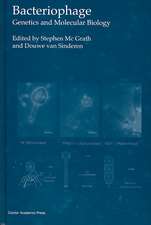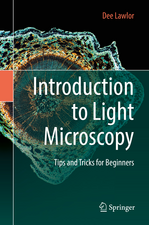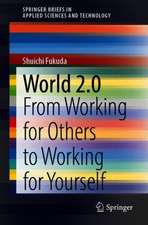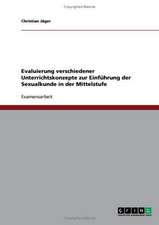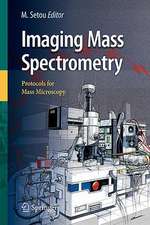Protocols in Semen Biology (Comparing Assays)
Editat de N. Srivastava, Megha Pandeen Limba Engleză Hardback – 5 oct 2017
The information is presented in simple language with illustrative figures and colour microphotographs, making it understandable for readers of every level. It highlights recent findings, the comparative analysis of assays, protocols, points to ponder, background information and major references, and also compares various assays for evaluating a seminal parameters.
The book provides a comprehensive resource for beginners, as well as academics, investigators and scientists of animal semen biology and relevant fields. Further, it offers valuable teaching material.
| Toate formatele și edițiile | Preț | Express |
|---|---|---|
| Paperback (1) | 566.38 lei 38-44 zile | |
| Springer Nature Singapore – 13 dec 2018 | 566.38 lei 38-44 zile | |
| Hardback (1) | 585.91 lei 38-44 zile | |
| Springer Nature Singapore – 5 oct 2017 | 585.91 lei 38-44 zile |
Preț: 585.91 lei
Preț vechi: 732.39 lei
-20% Nou
Puncte Express: 879
Preț estimativ în valută:
112.13€ • 114.83$ • 93.27£
112.13€ • 114.83$ • 93.27£
Carte tipărită la comandă
Livrare economică 14-20 martie
Preluare comenzi: 021 569.72.76
Specificații
ISBN-13: 9789811051999
ISBN-10: 9811051992
Pagini: 280
Ilustrații: XVII, 288 p. 63 illus., 51 illus. in color.
Dimensiuni: 178 x 254 mm
Greutate: 0.83 kg
Ediția:1st ed. 2017
Editura: Springer Nature Singapore
Colecția Springer
Locul publicării:Singapore, Singapore
ISBN-10: 9811051992
Pagini: 280
Ilustrații: XVII, 288 p. 63 illus., 51 illus. in color.
Dimensiuni: 178 x 254 mm
Greutate: 0.83 kg
Ediția:1st ed. 2017
Editura: Springer Nature Singapore
Colecția Springer
Locul publicării:Singapore, Singapore
Cuprins
Chapter 1. Semen Analysis – An Overview.- Chapter 2. Selection of Spermatozoa.- Chapter 3. Handling and Applications of Optical Devices.- Chapter 4. Basic Semen Assays.- Chapter 5. Estimates of Sperm Motility.- Chapter 6. Evaluating Sperm Cell Viability & Membrane Integrity.- Chapter 7. Counting Sperm Numbers.- Chapter 8. Evaluating Sperm Cell Morphology.- Chapter 9. Biochemical Assays in Spermatology.- Chapter 10. Estimating Metabolic Activity of Spermatozoa.- Chapter 11. Evaluating Resistance of Spermatozoa to Adverse Conditions.- Chapter 12. Determining Oxidative Stress of Spermatozoa.- Chapter 13. Determination of Mitochondrial Function in Sperm Cells.- Chapter 14. Determination of Capacitation Related Changes Using Fluorescent Stains.- Chapter 15. Evaluating Damages to Sperm DNA.- Chapter 16. Estimating Proteins of Semen.- Chapter 17. Measuring Lipids of Spermatozoa and Seminal Plasma.- Chapter 18. Gel Electrophoresis of Proteins and Nucleic Acids.- Chapter 19. Immuno-Reproductive Assays in Semen Biology.- Chapter 20. Sperm Function Assays.
Recenzii
“This is an extremely useful all-in-one laboratory reference manual on semen analysis. It provides complete coverage of experimental assays related to semen analysis and thus it overcomes the limitations of other comparable publications. This book will be useful for students, teachers, and practitioners of andrology.” (Prabhakara P. Reddi, Doody's Book Reviews, January, 2018)
Notă biografică
Dr. N Srivastava is a Senior Scientist (Agricultural Research Services) in the ICAR- Central Institute for Research on Cattle, in Meerut, India. Previously, he was working with the ICAR- Indian Veterinary Research Institute, in Izatnagar, India. His specialization is in Animal Reproduction and Gynaecology. He has over 52 research papers in high rated journals and 9 books, besides several popular articles to his credit. He is a part of a number of scientific societies, namely, Indian Science Congress, Indian Society for Study of Animal Reproduction, Indian Society for Study of Reproduction and Fertility, Research Board of Advisors of American Biographical Institute, Indian Veterinary Association, A & N Chapter, Port Blair, Indian Academy of Veterinary Nutrition and Animal Welfare etc. He has also received a number of awards including Merit Scholarships, National Eligibility Test and three Gold Medals in the field of Animal Reproduction.
Dr. Megha Pande, is scientist (Agricultural Research Services) of repute working in the Animal Physiology and Embryo Transfer Laboratory, ICAR-Central Institute for Research on Cattle, in Meerut, India. Her specialization is in Animal Reproduction and Gynaecology. She has published over 23 research papers in high rated journals and 2 training manuals, besides several popular articles to her credit. She is an active member of a number of scientific societies in her field, namely, Indian Society for Study of Reproduction and Fertility, Indian Science Congress, Indian Society for Study of Animal Reproduction etc. She has also received a number of awards in her academic field including Gold (Graduation) and Silver (Post-Graduation) medal, besides qualifying National Eligibility Test and Senior Research Fellow.
Dr. Megha Pande, is scientist (Agricultural Research Services) of repute working in the Animal Physiology and Embryo Transfer Laboratory, ICAR-Central Institute for Research on Cattle, in Meerut, India. Her specialization is in Animal Reproduction and Gynaecology. She has published over 23 research papers in high rated journals and 2 training manuals, besides several popular articles to her credit. She is an active member of a number of scientific societies in her field, namely, Indian Society for Study of Reproduction and Fertility, Indian Science Congress, Indian Society for Study of Animal Reproduction etc. She has also received a number of awards in her academic field including Gold (Graduation) and Silver (Post-Graduation) medal, besides qualifying National Eligibility Test and Senior Research Fellow.
Textul de pe ultima copertă
This book on protocols in semen biology is a compilation of 20 chapters written by 15 experts from 5 Indian Council of Agricultural Research institutions, focusing on the basics of various procedures in semen biology with applications in animal and other allied sciences.
The information is presented in simple language with illustrative figures and colour microphotographs, making it understandable for readers of every level. It highlights recent findings, the comparative analysis of assays, protocols, points to ponder, background information and major references, and also compares various assays for evaluating a seminal parameters.
The book provides a comprehensive resource for beginners, as well as academics, investigators and scientists of animal semen biology and relevant fields. Further, it offers valuable teaching material.
The book provides a comprehensive resource for beginners, as well as academics, investigators and scientists of animal semen biology and relevant fields. Further, it offers valuable teaching material.
Caracteristici
Elaborates the procedures for semen evaluation in an easy to understand, step by step fashion Compares basic as well as advanced protocols to help researchers decide on assays most suited for a particular research aim Describes protocols effectively using illustrations, precautions (points to ponder) and troubleshooting
